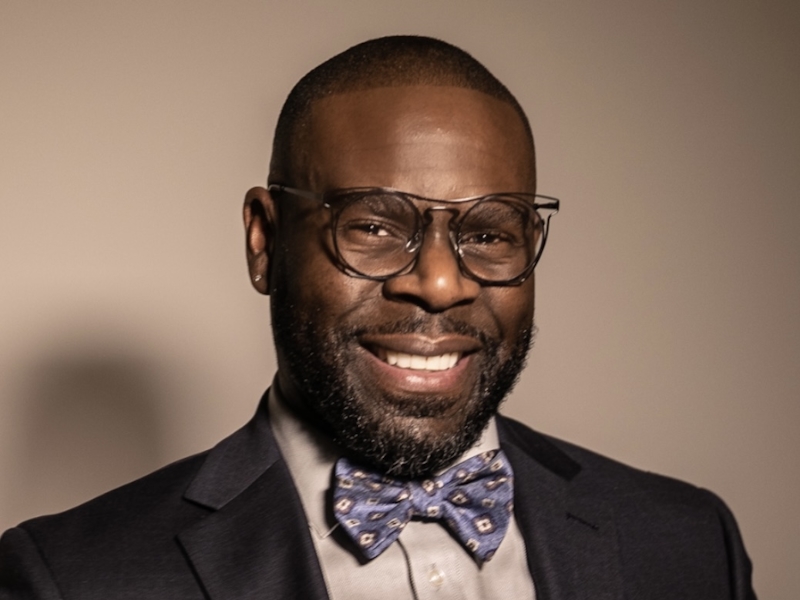Career Historian Will Lead Bronzeville Center for the Arts
In new role, Robert Parker plans to celebrate African American art, history and culture.

Robert Parker has spent his career preserving African American history as well as developing public history institutions. Photo courtesy of the Bronzeville Center for the Arts.
The beginning phases of a destination arts museum have brought a new face to Milwaukee.
Robert Parker, a career historian, has come to the city as the first executive director and chief executive officer of the Bronzeville Center for the Arts. He will take the lead in establishing an art museum in the heart of the Bronzeville neighborhood.
Parker has spent his career preserving African American history as well as developing public history institutions, most recently as the inaugural executive director at The Chickasaw Nation’s Chickasaw Inkana Foundation in Tupelo, Mississippi.
He has served in various roles for organizations dedicated to national parks, monuments and historical sites. He also is on the National Board of Directors for the Association of African American Museums.
“Robert is just a wonderful director of community-based presentations,” said Elizabeth Clark-Lewis, a mentor of Parker’s. “He is proficient in helping the general public understand the importance of community-based institutions.”
“We are thrilled to have Robert join and lead the organization at such a pivotal time,” said Kristen Hardy, chair of the Bronzeville Center for the Arts board. “Robert shares our vision and has practical, hands-on experience, combined with a track record of success in museum development, fundraising campaigns and exhibit coordination. We are confident that Robert is the leader we need to bring the BCA vision to life.”
‘Creating a new space’
In his new role at the Bronzeville Center for the Arts, or BCA, Parker will oversee the planning, design, construction, community engagement and operation elements of the center’s two Bronzeville developments: Gallery 507 and the future destination arts museum.
“I think what was most intriguing about the project was this idea of creating a new space to celebrate African American art, history and culture, with the emphasis on art first,” said Parker. “And from that, you have history and culture reflecting the art itself.”
This will be Parker’s third time helping design a public institution from scratch. With the other projects under his belt and his wealth of knowledge from other experiences, Parker said the destination art museum just feels like continuing his work.
From the classroom to the museum
This was never work Parker planned on doing, though. He initially planned to teach history.
“I’ve realized that I didn’t have to teach it in the confines of an academic setting or a classroom,” he said. “Now the world is my classroom with museums. And in public spaces, you can still teach and help people connect to the importance and significance of art, objects, artifacts, things that are of either historical or importance.”
Developing public history institutions is a passion that he intends to share with Milwaukee. He wants people to understand the educational value that a museum brings to communities, specifically for schools surrounding it.
The museum is still in the planning phase, but leaders are hopeful it will be up and running by 2026.
“This project brought me to Milwaukee, and I’m confident it will do the same for visitors from across the state and nation,” Parker said.
For more information
To follow the BCA project, go to www.BCAMKE.org.
New leader of Bronzeville Center for the Arts plans to celebrate African American art, history and culture was originally published by the Milwaukee Neighborhood News Service.
















